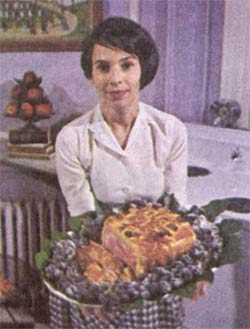The Other French Chef

When I was researching Julia Child recently, I came across an interesting 1962 article about French cooking: “French Food—U.S. Style” by Esther Riva Solomon. It must have been part of a work-in-progress because her book, titled, Instant Haute Cuisine, appeared the next year.
Ms. Solomon wanted to share what she had learned in Paris where, like Julia Child, she had attended the famous Cordon Bleu school for chefs. But her book appears to have sunk into obscurity while Child’s Mastering the Art of French Cooking became a long-running best-seller.
I’m only guessing here, for I am no chef (although I like to think I have mastered macaroni avec frommage et cut-up hot dogs), but the word “Instant” in Ms. Solomon’s title might explain why she is little remembered today.
In her Post article, she said, “Cordon Bleu was everything I’d hoped it would be, but the most valuable thing I learned there was a principle that would have shocked the chef. To him, it was impossible to turn out haute cuisine—classic French cookery—without spending hours in the kitchen, going through countless steps of preparation. Most American women don’t have that kind of time. Fortunately almost anyone can copy French masterpieces quickly, and so well that gourmets can’t tell the difference.”
“[In the Cordon Blue classes] I began to see that the more involved a dish, the less each subtlety matters in the total taste picture. The more steps, the more you can substitute and get the same effect…
“While the other students took copious notes, I found myself watching for ingredients which I could duplicate with the best of the processed foods available in supermarkets back home. Potato soup, for example. So many French soups start with potatoes. But there’s at least one excellent frozen potato soup I can buy almost anywhere. By substituting it in my Potage Grand Duc recipe (cream-of-cauliflower soup), I can save more than an hour of work. The soup manufacturer has already done the work for me.”
Apparently America’s cooks, and their families, could tell the difference between speedy cuisine and the old, slow method. It must have been surprising for Ms. Solomon to see American women actually finding the time and the patience to cook in the classic, painstaking manner. Given the choice between saving time and producing a classic poulet à l’estragon, most cooks think the extra time worth the investment.